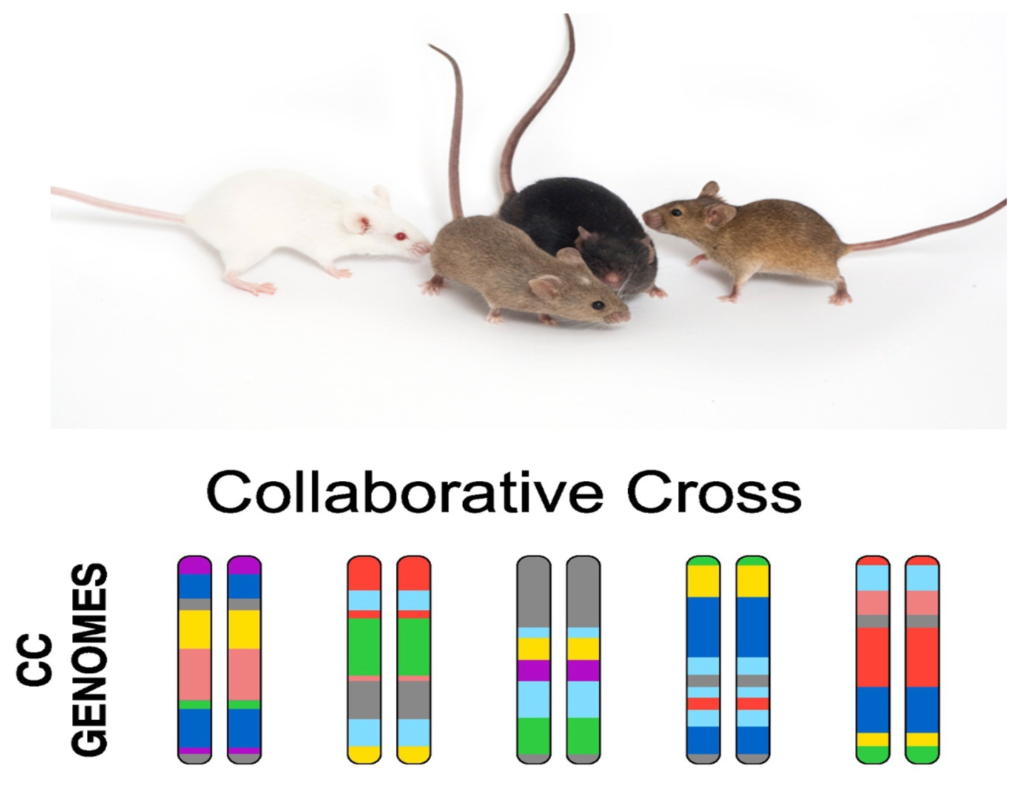GENE-ENVIRONMENT INTERACTIONS (GxE)

We are using Collaborative Cross mice to explore individual susceptibility to the drug diethylstilbestrol (DES). DES is a synthetic estrogen that caused infertility and cancer in adults who were exposed prenatally.
We exposed a panel of CC mice to DES and found male reproductive phenotypes ranged from nearly unaffected to complete infertility. The next steps of the project are to map the alleles controlling sensitivity, and to test if this sensitivity applies to other estrogenic chemicals. The global mechanisms of this process are likely to be similar between mice and humans and our approach will be applicable to a range of environmental exposures that are public health concerns.
ENVIRONMENTAL EPIGENETICS
Since 2016, we have been a part of the NIEHS TaRGET II Consortium whose goal is understand the epigenetic consequences of early life toxicant exposures. Our lab exposed mice to 2,3,7,8-tetrachlorodibenzo-p-dioxin (TCDD) and measured gene expression and chromatin accessibility in several tissues at multiple ages. We identified long-term epigenetic signatures present several months after exposure. Open questions remain about exactly when and how these modifications arose, and the complex relationships between exposures, epigenetic profiles, and disease phenotypues. We are carrying this work forward in mouse models of Alzheimer's disease through new collaborations.
GENETICS OF HYBRID MALE STERILITY IN HOUSE MICE

Hybrid sterility is of great evolutionary significance because it maintains barriers between species. Solving the genetics of hybrid sterility is a challenge because fertility is influenced by so many factors, and because hybrids exhibit gene-gene interactions that are hard to detect in conventional QTL mapping designs. Our approaches are designed to overcome just these limitations.
We have created a variety of sterile male hybrids by crossing diverse mouse strains and found differences within subspecies that have major roles in hybrid sterility. We are currently fine mapping sterility QTL and working toward a predictive model of which inbred mouse strains are reproductively incompatible.